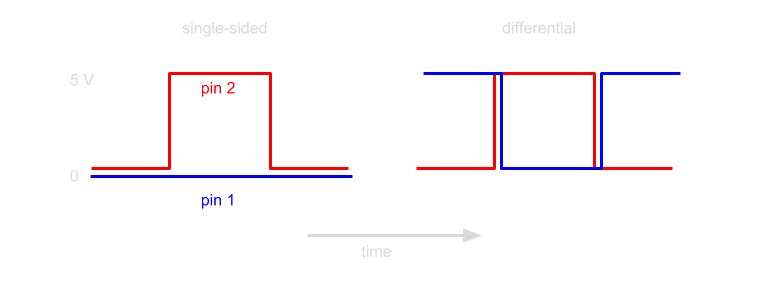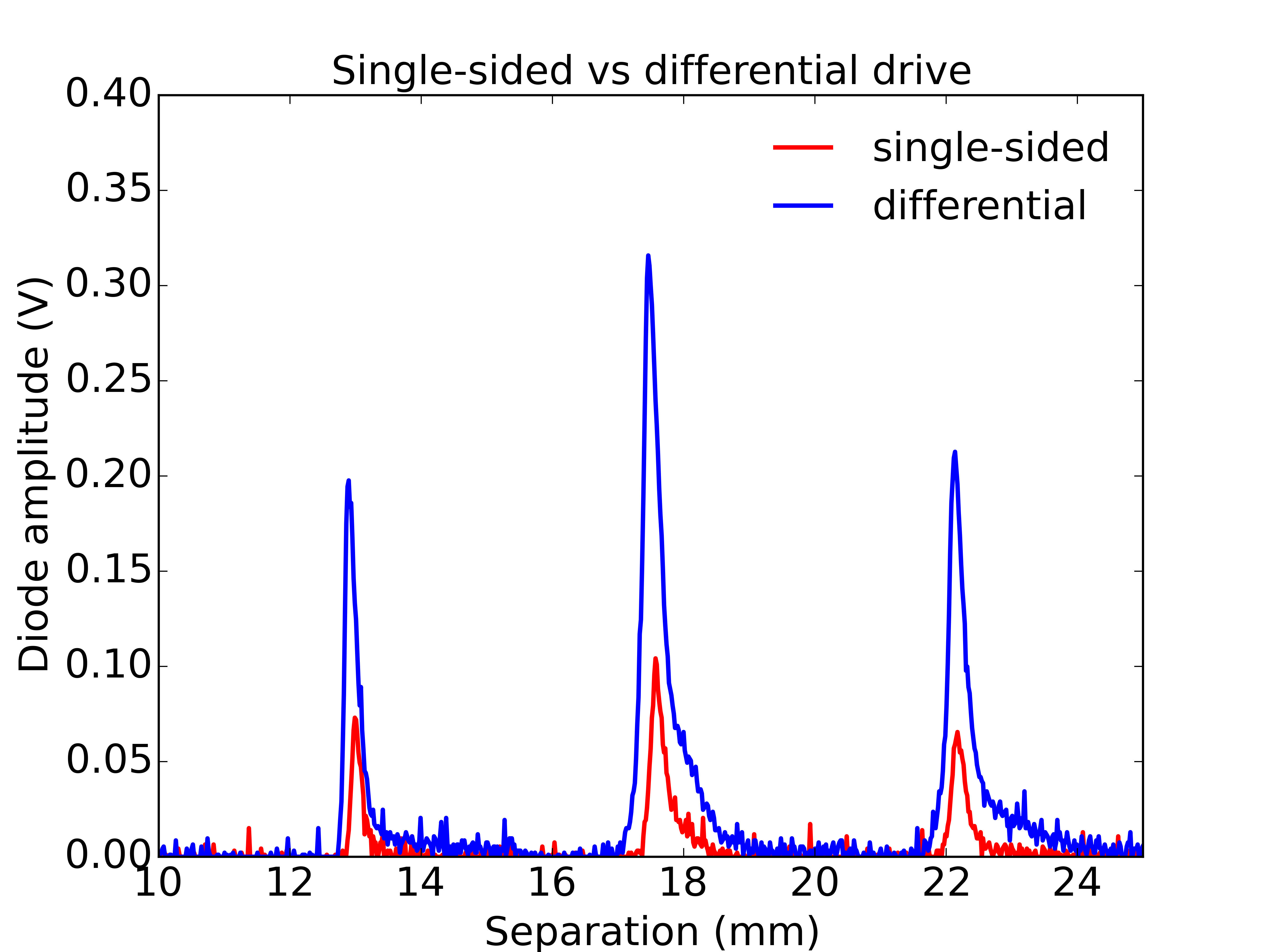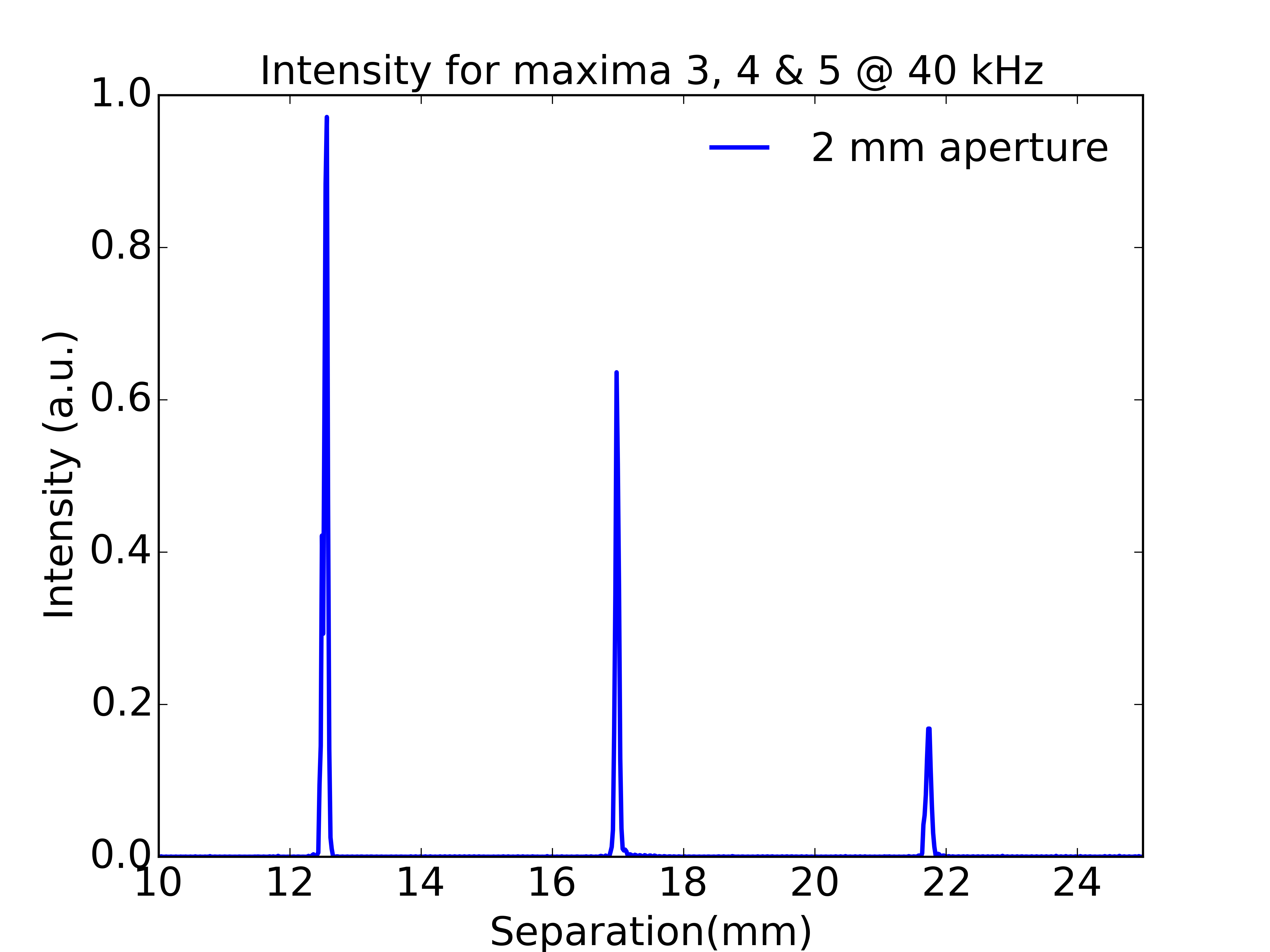-
Differential drive for the ultrasound transmitter
01/02/2016 at 20:35 • 0 commentsI had been driving the ultrasound transmitter in a single-sided way, using the tone() function to output a square-wave to one side of the transducer while keeping the other side grounded. Using the Uno, this gives a 2.5 V amplitude square-wave drive to the transmitter. However a single-sided drive doesn't make the most of the microcontroller and instead of grounding the other side of the transmitter we can drive it with the complement of the other pin. This yields a 5 V amplitude square-wave, winning signal on the detector side.
I spotted the toneAC library after I had written code to implement these waveforms using timer1. It should do the trick nicely.![]()
It seems to have worked, the graph below shows the change in signal size at the detector between single-sided and differential drive. I was expecting exactly a factor of two gain in signal size, but there is a little more than this and I will have to figure out why. You never quite get what you expect! Anyway, this is all good and I will be using differential drive from now on.
![]()
-
A first look at Finesse
12/21/2015 at 21:37 • 1 commentA key figure of merit for a Fabry-Perot interferometer is the Finesse.
Finesse = (full width @ half maximum of the intensity maxima) / (separation of maxima). Since the Finesse relates to the intensity maxima we have to square the voltage measured by the diode: it measures amplitude in the present configuration, where it acts as a half wave rectifier. An intensity graph is plotted below, from which it is possible to determine the width and position of the peaks.
![]()
Doing so we find the following data:
Peak order Centre (mm) Full width half maximum (mm) 3 12.58 0.063 4 16.99 0.061 5 21.74 0.083 Finally, we are able to determine an average Finesse of 66, for these peaks. It is an interesting quantity since it relates to power reflection coefficient from the mirrors and also to how well it acts as a spectrometer, given by its resolving power. More of all this in a following log entry.
Standing waves of sound
An ultrasonic interferometer is assembled from optical drive components, 3d-printed parts and an ultrasonic range-finder.
 Andrew Ferguson
Andrew Ferguson

